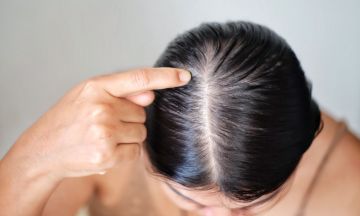When regaining a fuller head of hair, many people turn to hair transplant procedures as a long-lasting solution. These procedures are gaining popularity, especially in countries like India, where skilled cosmetic surgeons in India excel in providing natural-looking results. In this blog, we’ll break down the basics of hair restoration, exploring the procedure, potential complications, and tips for a smooth recovery.
Hair Transplant
Hair transplantation is akin to a magical transformation for your hair! In this surgical procedure, hair follicles, typically sourced from the back or sides of your scalp, are strategically relocated to areas experiencing thinning or balding. This permanent solution to hair loss has gained popularity in India, where cosmetic surgeons are renowned for their expertise in creating a remarkably natural appearance. Understanding how your genes influence hair loss is important in determining the success and longevity of this transformative process.
Hair Transplant Procedure
The two main methods involved in hair transplant procedures are FUT and FUE. In FUT, a piece of skin is taken from the donor area and hair follicles are placed in balding areas. However, FUE is very detailed since each hair follicle is removed and implanted.
Depending on your hair type and level of hair loss, you can choose the FUT or FUE methods. Cosmetic surgeons in India may help you decide which way to go for this surgery.
Hair Transplant: Complications
Like any surgery, there can be some issues with a hair transplant in India. Knowing about them is important so you can make a smart choice.
Swelling
After a hair transplant, your scalp might swell up a bit, a normal occurrence typically observed a few days post-surgery. Advice for getting a hair transplant includes using cold packs and prescribed medication to alleviate swelling, with the reassuring note that this temporary condition typically resolves within a week.
Itching
Your scalp might get itchy as the new hair follicles settle in. It’s important not to scratch to avoid harming the newly transplanted hair. Cosmetic surgeons in India often provide tips and special creams to help with the itching.
Numbness
At times after the operation, your scalp may become somewhat numb. This occurs due to the surgery’s effects on your nerves. Still, you need not worry as, with time, this sensation returns slowly within weeks or months until its normality again prevails. Just wait!
Discomfort
You might feel slightly uncomfortable after the surgery, but it shouldn’t be too painful. If you’re in a lot of pain, talk to your surgeon. They can give you medicine to help you feel better. Similarly, when preparing for laser hair removal, it’s important to follow some steps to ensure a comfortable experience and optimal results.
Scalp Blemishes
After a hair transplant in India, you might notice scabs or redness on your scalp. These usually go away with time, especially if you follow your surgeon’s care instructions.
Conclusion
While deciding on getting a hair transplant is difficult, knowing what happens during the procedure and being prepared for any problems can make it less difficult. Those considering VJ’s Cosmetology Clinic must consult a cosmetic surgeon about having a hair transplant. The correct method and adhering to post-operative care instructions will ensure you get natural-looking results and feel better about yourself afterwards.


